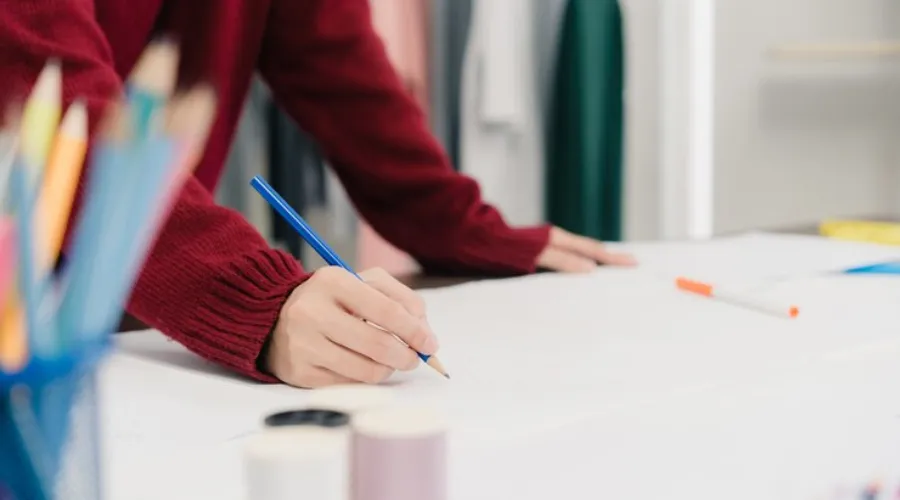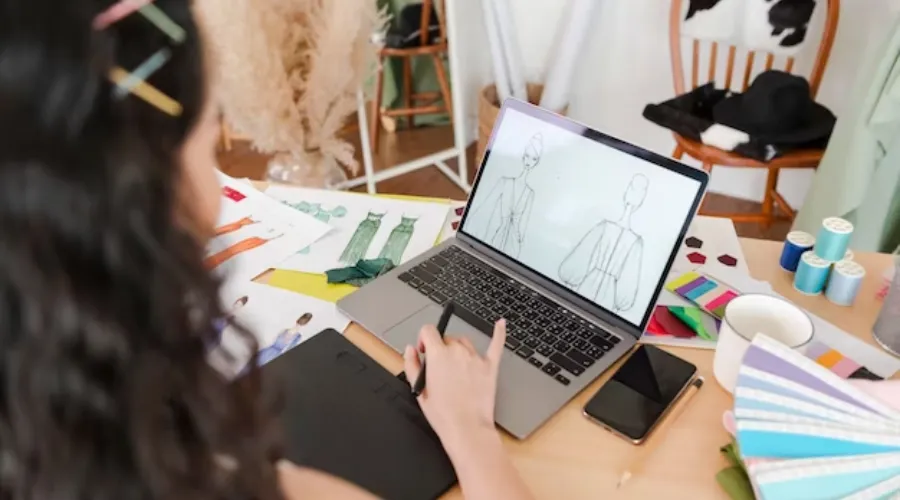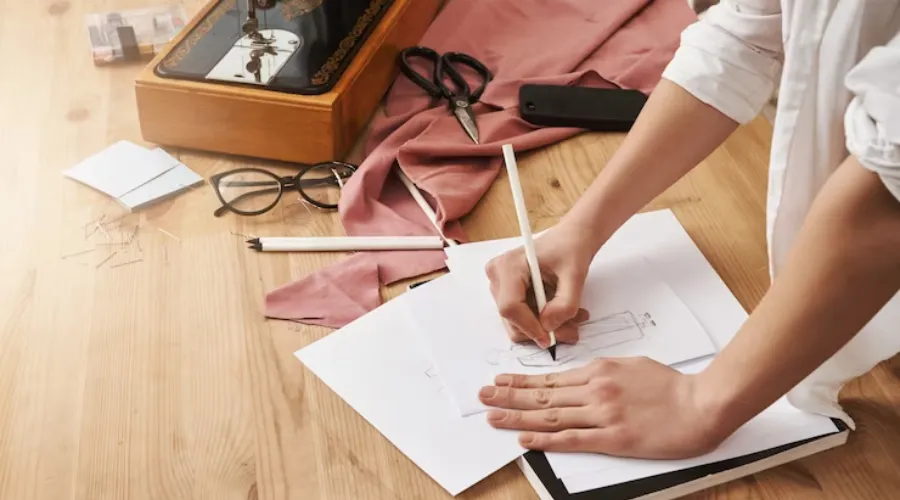Textile design is a captivating and versatile field that marries artistry with functionality, allowing you to transform fabric into a canvas for your creativity. A career in textile design offers intriguing prospects whether your interests are in fashion, home décor, or textiles in general. We will examine the world of textile design courses, what it takes to be a good textile designer, the various types of textile design, necessary skills, potential career paths, advantages of studying textile design, and current industry trends in this extensive guide.
Textile Design Courses: What Do You Need to Do to Become a Textile Designer?

- Educational Foundation:
Having a solid educational background is crucial to starting your career as a textile designer. A bachelor’s degree in textile design courses or a closely related subject, such as fashion design, the fine arts, or graphic design, is typically required for this. You will acquire a crucial understanding of textiles, design ideas, and the sector thanks to this educational foundation.
- Skills Development:
While education provides the groundwork, honing your skills is equally crucial. Textile designers need to master various techniques, including hand drawing, digital design software, and textile printing methods. Skills in colour theory, pattern creation, and fabric manipulation are also vital.
- Creative Portfolio:
Build a strong portfolio showcasing your textile design projects. Include a variety of work that demonstrates your versatility, from fabric patterns and textile prints to finished products like clothing, home furnishings, or accessories. A standout portfolio is your passport to job opportunities or freelance work.
- Internships and Practical Experience:
Gaining practical experience through internships or entry-level positions in textile design firms or fashion houses is invaluable. It exposes you to real-world design challenges, helps you build industry contacts, and enhances your skills.
- Stay Updated:
The field of textile design is constantly changing. Attend workshops, conferences, and networking events to stay current on the newest materials, trends, and technology. Your designs remain current and relevant through ongoing learning.
Textile Design Courses: What Are the Different Types of Textile Design?

Textile design is a broad domain, encompassing various specialized areas. Some of the prominent types of textile design include:
- Fashion Textile Design:
Fashion textile designers create fabrics and patterns specifically for clothing and accessories. This includes creating textiles for high fashion, ready-to-wear, sportswear, and other garments.
- Interior Textile Design:
Interior textile designers focus on creating textiles for home furnishings, such as curtains, upholstery, carpets, and bedding. They aim to enhance interior spaces with functional yet aesthetically pleasing fabrics.
- Technical Textile Design:
This specialized field involves designing textiles for industrial and technical applications, such as medical textiles, automotive fabrics, and protective gear.
- Surface Pattern Design:
Surface pattern designers create intricate patterns and motifs for fabrics, which are often used in fashion, home decor, and stationery products.
- Textile Print Design:
Textile print designers specialize in creating print designs for fabrics, including repeat patterns and placement prints. They often work closely with fashion designers and manufacturers.
Textile Design Courses: What Are the Skills Required for Textile Design?

Becoming a proficient textile designer demands a diverse skill set.
- Creativity: The ability to generate original ideas and designs is paramount in textile design.
- Colour Theory: A deep understanding of colour harmonies and combinations is crucial for creating visually appealing textiles.
- Technical Proficiency: Proficiency in design software and hands-on techniques such as screen printing or dyeing.
- Attention to Detail: Precise attention to detail ensures flawless patterns and prints.
- Knowledge of Fabrics: Familiarity with various textiles, their properties, and how they interact with dyes and printing methods.
- Trend Awareness: Staying updated with industry trends and consumer preferences.
- Communication: Effective communication skills are essential for presenting your designs to clients or collaborators.
- Business Acumen: Understanding the business side of textile design, including production costs and market trends.
Textile Design Courses: What Are the Career Prospects for Textile Designers?
Textile designers enjoy a wide range of career opportunities in both traditional and emerging fields. Some potential career paths include:
- Textile Designer: Creating patterns, prints, and designs for textiles used in fashion, interiors, or technical applications.
- Fashion Designer: Incorporating textile designs into clothing and accessories.
- Interior Designer: Utilizing textiles for home decor and interior spaces.
- Technical Textile Designer: Designing textiles for specialized industries like healthcare or automotive.
- Freelance Designer: Working independently and selling your designs to manufacturers, fashion brands, or clients.
- Educator: Teaching textile design at educational institutions.
Textile Design Courses: What Are the Benefits of Studying Textile Design?
Studying textile design offers numerous advantages:
- Creative Outlet: It’s a field where you can unleash your artistic imagination.
- Career Diversity: Opportunities span various industries, offering job security.
- Global Impact: Textiles are a ubiquitous part of daily life, allowing you to make a global impact.
- Sustainability: Textile designers can play a pivotal role in promoting eco-friendly and sustainable practices.
- Personal Fulfillment: Crafting designs that come to life on fabric is deeply rewarding.
Textile Design Courses: What Are the Trends in Textile Design?
Textile design is not immune to evolving trends.
- Sustainability: Eco-conscious consumers are driving demand for sustainable and ethically sourced textiles.
- Digital Printing: Advancements in digital printing technology offer intricate and customizable designs.
- Textures and Embellishments: Designers are experimenting with textures, embroidery, and mixed media.
- Cultural Fusion: A blending of global cultures and traditions is influencing patterns and motifs.
- Handmade and Artisanal: A resurgence of appreciation for handcrafted textiles and traditional techniques.
Conclusion
Textile design is a dynamic and rewarding field that invites you to blend your artistic vision with technical expertise. To enhance your skills and delve into the world of textile design, consider exploring online Textile Design courses on platforms like Domestika.They provide you with the chance to study from professionals in the field and improve your knowledge of textile design through their extensive course selection. Start your career in textile design today and set out on a creative journey that fuses creativity with usefulness. For more information, visit Trendingcult.

